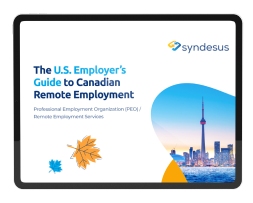As the H-1B season begins, individuals and companies are optimistic about securing an H-1B visa, which is intended for foreign workers in specialized occupations.
However, each year, there is a cap on the number of visas that can be issued, and the demand for H-1B visas typically exceeds the supply. To determine who can apply for the visa, a lottery system is used to randomly select individuals.
Due to the limited number of visas available — currently capped at 85,000 — it’s inevitable that some won’t be selected and companies may feel out of options. There is also a significant Green Card backlog to contend with even for those who do get their H-1B visa, which particularly affects Indian nationals and leaves talented workers in limbo.
It’s no surprise that employers are exploring alternative solutions to hiring and retaining employees, with global parking emerging as one potential strategy. In this article, we will delve into what global parking is, how it functions, and how global parking in Canada could potentially benefit your organization.
What is Global Parking?
Global parking is a term that has been coming up a lot recently, but not everyone knows what it means. However, if you hire employees on an H-1B visa and are facing difficulties, it could be the exact solution you are looking for.
Whether as a long or short-term strategy, global parking allows companies to relocate an employee to an affiliated entity outside of the US where they can work remotely, essentially “parking” the employee while you prepare for the next steps.
You can place an employee almost anywhere in the world, for example, in their home country or another country where the company operates. If the business doesn’t have an international entity, then partnering with an Employer of Record (EOR) is a simple solution that allows companies — including small-to-medium size businesses — to hire employees abroad without setting up an office there.
So, if an employee is not selected in the annual visa lottery, or their work authorization is otherwise expiring with no means of keeping them in the US, this creative immigration solution could mean that you don’t lose crucial talent.
This ultimately gives companies time to resolve visa issues or reapply for the H-1B the following year while retaining the employee and their essential skills in the meantime.
How does global parking work?
Employers can use global parking as a long or short-term strategy depending on the needs of the company and the employee. There are some key differences between the two, so choosing the right one for your company depends on whether you need your employer to be in the US or not.
Short-term global parking
This can be an effective solution for companies whose employees are required to be in the US for specific assignments. If having them work remotely permanently isn’t an option logistically then this provides an opportunity to reassign the employee temporarily while preparing for the next steps of their work visa application. In the meantime, they will still be employed by the company and can work on other projects.
Long-term global parking
If you don’t need your employee to be in the US then global parking can mean you don’t need to worry about applying for another H-1B visa in the future. You can keep your business operating normally by having your employee work remotely. This strategy means that both the employer and the employee benefit from increased flexibility with a long-term solution to the expense and anxiety of the H-1B process.
Long-term global parking can also open the doors for other longer-term strategies — such as the boomerang strategy — if the employee is still interested in returning to the US after becoming a citizen of the country they have relocated to, such as Canada.
For US companies that already have an office overseas, it isn’t difficult to transfer that employee but if they don’t, and don’t want the costs of opening an entity at this time, then partnering with an EOR can be the solution.
By working with a third-party employment company, the employer does not need to set up a legal entity or establish a physical presence in the country where the foreign worker is temporarily employed.
The EOR will take care of all the legal and administrative tasks, such as payroll, tax withholding, and compliance with local labor laws and the employee can carry on with their work as normal. There is no maximum number of employees you can hire through an EOR.
US tech companies can park employees in Canada without a Canadian office but using an EOR.
For US-based companies that are unable to hire skilled workers because of the challenges surrounding the H-1B visa or otherwise, hiring them remotely in Canada through an EOR is the easiest and fastest way to get them onboard without needing to have an office in Canada.
As a Canadian Employer of Record, Syndesus is able to hire tech workers remotely on behalf of US employers, which means that the immigration, payroll, HR, tax, and other administrative processes of your US-based company are taken care of while you focus on expanding your workforce and moving your business forward.
Reach out to us to learn more about how we can help you hire and retain talent remotely in Canada.






